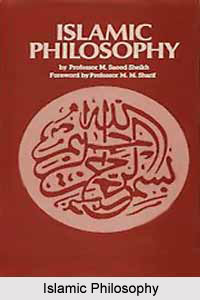 Doctrine of Illumination is closely connected with the concept of mysticism in Islam. It is actually the philosophy of neo-Platonism expressed in terms borrowed from the dualism of light and darkness. The discoverers of this concept were Hermes, Agathodaimon, the Greek philosophers up to and including Plato and the seers of Persia, who all taught the same doctrine. The names Ishraqi and Mashriqt, denote the knowledge that comes from the east and by illumination. They are puns meaning one and the same thing.
Doctrine of Illumination is closely connected with the concept of mysticism in Islam. It is actually the philosophy of neo-Platonism expressed in terms borrowed from the dualism of light and darkness. The discoverers of this concept were Hermes, Agathodaimon, the Greek philosophers up to and including Plato and the seers of Persia, who all taught the same doctrine. The names Ishraqi and Mashriqt, denote the knowledge that comes from the east and by illumination. They are puns meaning one and the same thing.
This doctrine is based on revelation and intuition as opposed to Aristotle, the Peripatetics and the theologians whose knowledge is based on argument and proof. It is believed that there is a greater east, the world of intelligences or pure lights, and a lesser east, the world of souls. The intelligences rise in the eastern horizon of God and the souls in that of the intelligences. To this succession corresponds a succession of descents to the west, and in the return of the soul to its origin lies the appearance of the soul apart from its body, its dawn, and its manifestation, after a purifying discipline, when the world of souls is revealed to it. Later the world of intelligences is revealed to it as it rises from the world of souls which has now become its west. Finally it meets at `the gate of gates` the first intelligence, the giver from which souls emanate, Gabriel.
This kind of illuminative knowledge is said to be immediate. True knowledge is intuitive, a unitary knowledge of the essence in its individuality. In this every veil is taken away and the soul knows the essence because it is present in it. This is only possible when the soul has stripped itself of all material things. The Light of Lights is at once the source of all beings and all knowledge, both of which irradiate from it. Victorious lights move the spheres, taking the place of the pure intelligences of other systems. Darkness is only the absence of light. It is caused by barriers (Barzakh) which shut off the light. The encompassing barrier is the outermost sphere. It is everywhere identical with itself so every point on it is the highest and the centre is the lowest. The living barrier is the heavenly bodies and the dead barrier is material bodies.
The supreme bliss is the knowledge of God in His attributes and His acts and of the beginning and end of being. There are two paths to this goal- the first by reasoning and argument and the second by training and discipline. Those who follow the first path are the Peripatetic philosophers, and those who follow the first path and a prophet are the theologians. Those who follow the second and Islam are the mystics, and the illuminated follow only the second path. In the first path are degrees, the material reason, reason in act, reason as a habit, and the reason from above which is not to be found in this world. The degrees of the second path are the discipline of the body by following religious laws, the pruning of bad habits from the soul, the polishing of the soul by pure and holy forms and, lastly, concentration on the beauty of God to the exclusion of all else. The third stage of this path, the polishing of the soul, is parallel to the fourth stage of the first path, the reason from above, because both see the images of things known, but differs from it because reason is not free from doubt. Also, the soul is like a mirror. With reason only part of it is polished and only part of the universe is reflected in it, but when it is wholly polished, it reflects everything.
This doctrine may be summed up as a spiritualist philosophy with a theory of mystical knowledge. God and the spiritual world are conceived as light and the acquisition of knowledge is illumination from above through the medium of the spirits of the spheres.



















